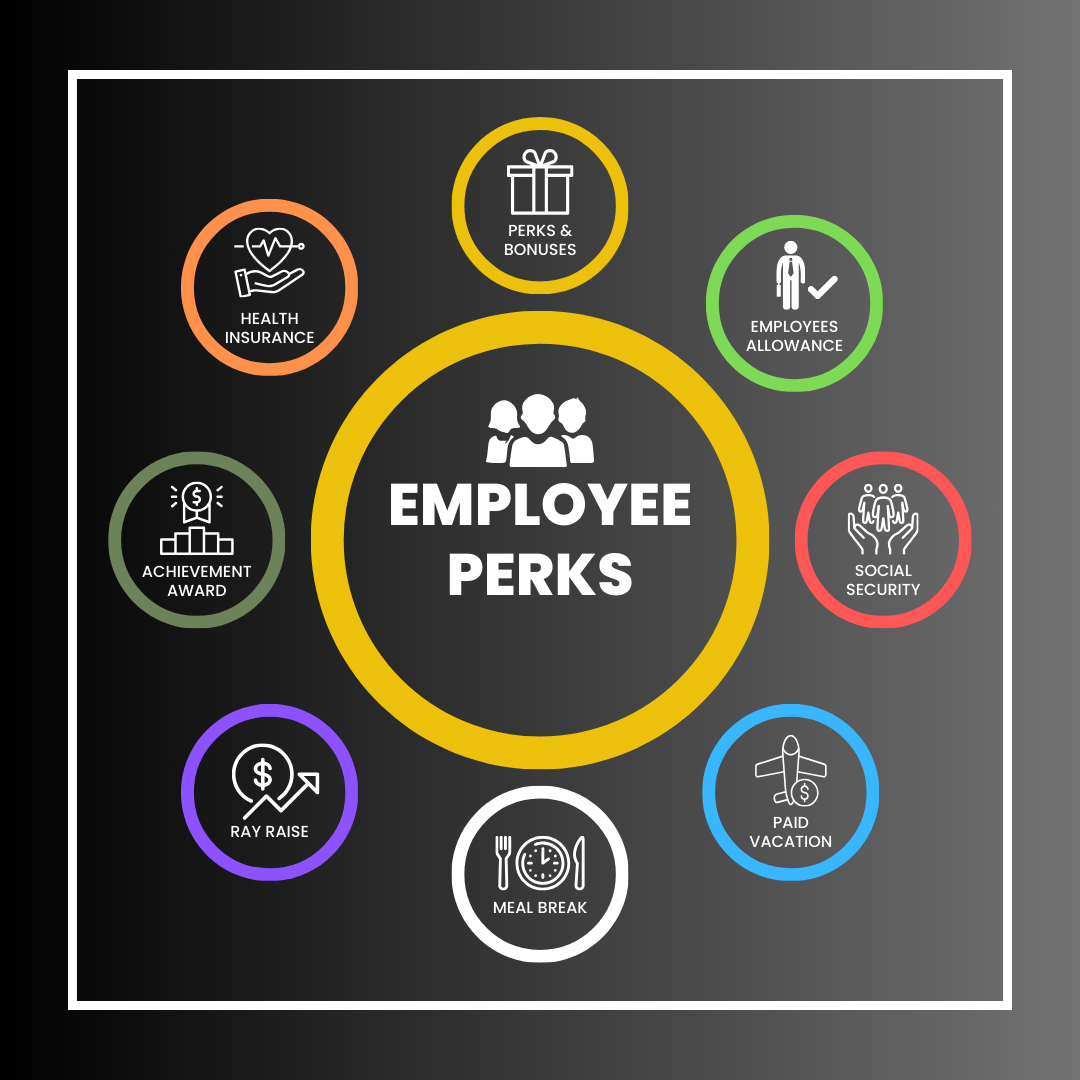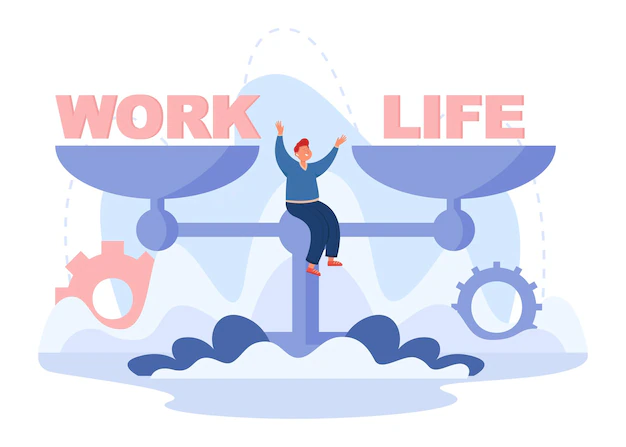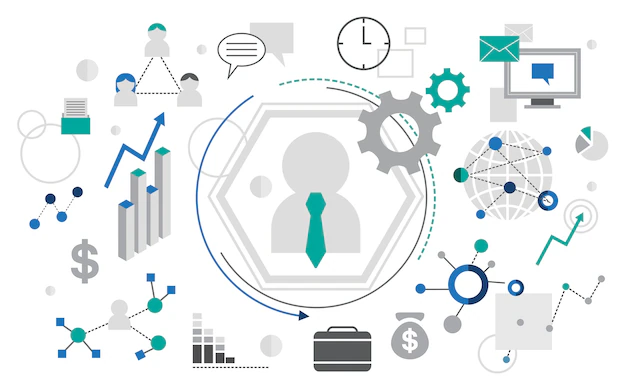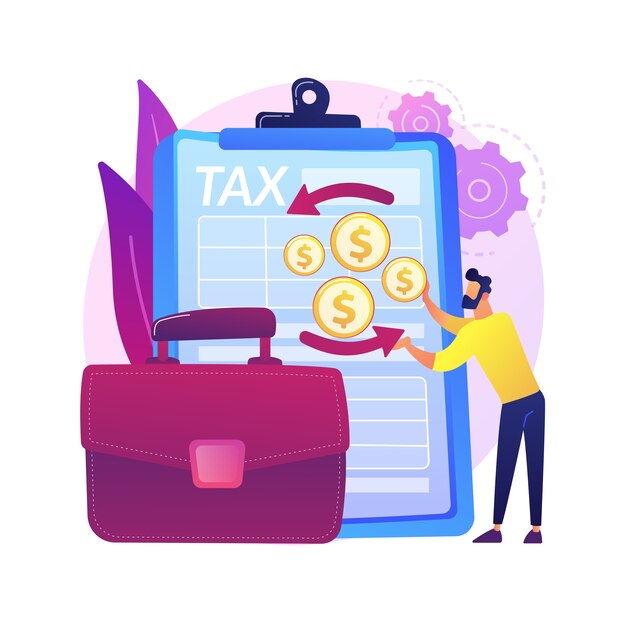200 Employee Perks To Enhance Happiness and Productivity


by Ummul Qura Danish
January 29, 2024
Welcome to our comprehensive guide on employee perks! In this article, we will explore 200 amazing perks, including the option of Huuray gift cards, that can enhance both happiness and productivity in the workplace. Whether you’re an employer looking to boost employee satisfaction or an employee seeking new ways to enjoy your work, this list has got you covered. So, let’s dive in and discover the perks that can make a real difference in your professional life!
Jump to section
What are Employee Perks?🤔
Employee perks are additional benefits or rewards that companies offer to their employees, beyond just their regular salary and benefits package. These perks enhance the overall employee experience and provide additional incentives for employees to stay with the company and perform at their best.
Why are Employee Perks important?🤷🏻♀️
Employee perks are important for several reasons, and they play a crucial role in attracting, retaining, and engaging talented individuals within an organization. Here are some key reasons why employee perks are important:
- Attraction and Recruitment: In a competitive job market, companies need to stand out to attract top talent. Attractive perks can differentiate an employer from its competitors, making it more appealing to potential hires.
- Retention and Loyalty: Offering appealing perks can help retain existing employees by creating a positive and satisfying work environment. When employees feel valued and supported, they are more likely to stay with the company for the long term.
- Employee Satisfaction and Morale: Perks contribute to overall job satisfaction and morale boosters. When employees feel that their well-being and needs are taken into consideration, they are likely to be happier and more engaged in their work.
- Work-Life Balance: Perks that support work-life balance, such as flexible working hours or remote work options, help employees manage their professional and personal lives more effectively. This, in turn, leads to increased job satisfaction and productivity.
- Productivity and Performance: Happy and motivated employees tend to be more productive. Perks that address physical and mental well-being, professional development, and a positive work environment contribute to higher performance levels.
- Competitive Advantage: Offering unique or innovative perks gives companies a competitive edge in the talent market. It signals to potential candidates that the organization is forward-thinking and invests in the well-being and development of its employees.
- Employee Engagement: Perks can enhance employee engagement by fostering a sense of belonging and appreciation. Employees who feel connected to their workplace are more likely to be committed and contribute positively to the company’s success.
Read also: 10 Ways To Improve Employee Productivity In The Workplace
Let’s have a chat
200 Employee Perks🎁
Employee Perks: Financial Perks💵

1. Competitive salary
Employees receive compensation that matches or exceeds industry standards, ensuring their work is fairly rewarded and providing financial stability.
2. Performance bonuses
Additional monetary rewards are given to employees for achieving or exceeding set performance targets, motivating high performance and productivity.
3. Profit-sharing
Employees receive a portion of the company’s profits, either through cash bonuses or contributions to retirement accounts, fostering a sense of ownership and alignment with company goals.
4. Stock options
Employees are allowed to purchase company stock at a predetermined price, allowing them to share in the company’s success and potentially benefit from stock price appreciation.
5. Retirement Compensation package
Comprehensive retirement benefits provide financial security for employees post-employment, allowing them to plan for their future.
6. Health savings accounts (HSAs)
Tax-advantaged accounts allow employees to save money for medical expenses not covered by their health insurance plans, providing flexibility and savings on healthcare costs.
7. Flexible spending accounts (FSAs)
Pre-tax accounts enable employees to set aside funds for qualified medical expenses, such as deductibles, copayments, and prescriptions, reducing their taxable income and saving money on healthcare expenses.
8. Employee discounts
Exclusive discounts on products or services offered by the company or partner businesses, allow employees to save money on purchases and enhance their overall compensation package.
9. Student loan repayment assistance
Support is provided to help employees manage and pay off their student loans, easing financial burdens and demonstrating the company’s commitment to employees’ financial well-being.
10. Tuition reimbursement
Financial assistance is offered to employees pursuing further education or professional development, covering tuition costs for approved courses or degree programs, and investing in their ongoing growth and skill enhancement.
Employee Perks: Health and Wellness💊

11. Comprehensive health insurance
Employees receive coverage for a wide range of medical services and treatments, ensuring they have access to quality healthcare when needed.
12. Dental and vision coverage
Insurance plans include benefits for dental care and vision exams, helping employees maintain their oral and visual health.
13. Mental health programs
Supportive programs and resources are available to address mental health concerns, promoting emotional well-being and resilience among employees.
14. On-site fitness facilities
Employees have access to fitness centers or exercise facilities located within the workplace, making it convenient to engage in physical activity and maintain a healthy lifestyle.
15. Employee Wellness programs
Initiatives and activities are offered to promote overall well-being, including workshops, challenges, and events focused on nutrition, stress management, and healthy habits.
16. Healthy snacks and meals
Nutritious food options are provided to employees, encouraging healthy eating habits and supporting their physical health and energy levels.
17. Ergonomic workstations
Workstations are designed to promote comfort and reduce the risk of musculoskeletal injuries, improving posture and productivity for employees.
18. Health screenings
Regular screenings are conducted to assess employees’ health status and identify potential health risks or issues early on.
19. Vaccination clinics
On-site clinics or programs offer vaccinations against common illnesses and diseases, promoting preventive healthcare and protecting employees’ health.
20. Gym membership discounts
Employees receive discounts or subsidies for gym memberships, making it more affordable for them to access fitness facilities and pursue their fitness goals.
Employee Perks: Work-Life Balance⚖️

21. Flexible hours
Employees have the flexibility to adjust their work schedule within certain parameters, allowing them to accommodate personal commitments and optimize productivity.
22. Remote work options
Employees can perform their job duties from a location outside of the traditional office setting, providing flexibility and autonomy in managing work-life balance.
23. Generous vacation days
Employees are granted a significant number of paid days off each year, enabling them to take time for rest, relaxation, and personal pursuits.
24. Paid time off (PTO)
Employees accrue paid leave that can be used for vacation, sick days, or personal reasons, providing flexibility and support for their well-being.
25. Summer Fridays
Employees have the opportunity to leave work early on Fridays during the summer months, allowing them to enjoy extended weekends and more leisure time.
26. Sabbatical programs
Employees are offered extended periods away from work, typically with partial or full pay, to pursue personal interests, recharge, or engage in professional development activities.
27. Family leave policies
Policies are in place to support employees who need time off to care for a newborn, newly adopted child, or family member with a serious health condition, ensuring they can balance work and family responsibilities.
28. Child care assistance
Support is provided to help employees access affordable and quality childcare services, alleviating the financial and logistical burdens of balancing work and parenting responsibilities.
29. Paid maternity and paternity leave
Parental leave, regardless of gender, is granted paid time off following the birth or adoption of a child, allowing them to bond with their new family member and adjust to their new role as a parent.
30. Telecommuting options
Employees have the flexibility to work remotely, either on a full-time or part-time basis, leveraging technology to stay connected and productive while enjoying a more flexible work arrangement.
Employee Perks: Professional Development📈

31. Training and development programs
Employees participate in structured learning experiences designed to enhance their skills, knowledge, and competencies relevant to their roles and career advancement.
32. Educational workshops
Workshops are conducted to provide employees with focused training on specific topics or areas of expertise, fostering continuous learning and professional growth.
33. Mentorship programs
Employees are paired with experienced mentors who provide guidance, advice, and support to help them navigate their career paths, develop new skills, and achieve their professional goals.
34. Conferences and seminars
Employees have the opportunity to attend industry conferences, seminars, and networking events to stay updated on the latest trends, expand their professional networks, and gain new insights and perspectives.
35. Professional association memberships
Employees are provided with memberships to professional organizations relevant to their field, facilitating access to resources, networking opportunities, and professional development activities.
36. Skill-building courses
Employees have access to courses and workshops aimed at developing specific skills or competencies needed to excel in their current roles or advance their careers.
37. Career Coaching
Employees receive one-on-one coaching sessions with career development experts to identify goals, create development plans, and overcome obstacles in their career paths.
38. Cross-training opportunities
Employees have the chance to receive training and gain experience in different roles or departments within the organization, broadening their skills and enhancing their versatility.
39. Leadership development
Programs are offered to develop leadership skills among employees, preparing them for future leadership roles and fostering a pipeline of talent within the organization.
40. Certifications support
Employees are supported in obtaining professional certifications relevant to their roles or career aspirations, enhancing their credibility, expertise, and marketability.
Employee Perks: Career Advancement👔

41. Internal job postings
Regular announcements of job openings within the organization, provide employees with opportunities to apply for new roles and advance their careers within the company.
42. Promotions based on merit
Advancements in job positions are determined by employees’ performance, skills, and contributions rather than solely by seniority or tenure, ensuring that deserving employees are recognized and rewarded for their achievements.
43. Performance reviews and feedback
Regular evaluations of employees’ performance and constructive feedback are provided to help them understand their strengths and areas for improvement, guiding their professional development and career advancement.
44. Succession planning
Strategies are put in place to identify and groom potential successors for key leadership positions within the organization, ensuring a smooth transition and continuity of leadership.
45. Career path planning
Employees receive guidance and support in mapping out their career trajectories, setting goals, identifying development opportunities, and creating plans to achieve their professional aspirations.
46. Cross-functional projects
Employees have the chance to participate in projects that involve collaboration across different departments or teams, providing exposure to diverse experiences and skills development opportunities.
47. Networking events
Events and activities are organized to facilitate networking and relationship-building among employees, helping them expand their professional connections and uncover career opportunities.
48. Employee recognition programs
Programs are implemented to recognize and celebrate employees’ achievements, contributions, and milestones, reinforcing a culture of appreciation and motivation for career advancement.
49. Employee of the Month awards
Outstanding employees are recognized every month for their exceptional performance, dedication, and contributions to the organization, serving as inspiration and motivation for others to excel.
50. Leadership opportunities
Opportunities are provided for employees to take on leadership roles or responsibilities, such as leading projects, teams, or initiatives, allowing them to develop leadership skills and advance their careers.
Employee Perks: Workplace Environment💻

51. Casual dress code
Employees are allowed to dress informally, promoting comfort and individual expression while maintaining professionalism suitable for the work environment.
52. Flexible dress code days
Certain days or occasions are designated for more relaxed dress standards, providing employees with the opportunity to express themselves creatively or comfortably.
53. Modern office facilities
Workspaces are equipped with state-of-the-art amenities and technology, creating an environment that supports productivity, collaboration, and innovation.
54. Collaborative workspaces
Areas within the office are designed to facilitate teamwork and interaction among employees, fostering creativity, communication, and idea-sharing.
55. Standing desks
Adjustable desks allow employees to alternate between sitting and standing while working, promoting better posture, reducing sedentary behavior, and improving overall health and well-being.
56. Outdoor workspaces
Outdoor areas are designated for work activities, meetings, or relaxation, providing employees with fresh air, natural light, and a change of scenery to enhance creativity and focus.
57. Game rooms or recreation areas
Recreational spaces within the office offer opportunities for relaxation, socialization, and stress relief through games, activities, or leisure pursuits.
58. Company-sponsored events
Social gatherings, celebrations, or outings organized by the company bring employees together outside of work hours, fostering camaraderie, team spirit, and a sense of belonging.
59. Team-building activities
Structured activities and exercises are conducted to strengthen relationships, build trust, and improve communication among team members, enhancing collaboration and morale.
60. Employee resource groups
Employee-led communities or networks are established based on common interests, backgrounds, or identities, providing support, networking opportunities, and a sense of belonging for participants.
Employee Perks: Technology and Tools🛠️

61. Cutting-edge technology
The organization invests in the latest and most advanced technology solutions to support employees’ work processes and enhance productivity.
62. Company-provided devices
Employees are supplied with company-owned devices such as laptops, tablets, or smartphones to perform their job duties effectively and efficiently.
63. Software subscriptions
Access to software tools and applications is provided through subscriptions or licenses, enabling employees to utilize industry-leading software for their tasks.
64. IT support services
Dedicated IT support staff or services are available to assist employees with technical issues, troubleshooting, and maintenance of hardware and software systems.
65. Training on new technologies
Employees receive training and development opportunities to learn how to use new technologies or software tools introduced in the workplace, ensuring proficiency and adoption.
66. Bring Your Device (BYOD) programs
Employees have the option to use their devices, such as laptops or smartphones, for work purposes, providing flexibility and accommodating personal preferences.
67. Technology stipends
Employees may receive financial allowances or reimbursements to purchase or upgrade personal technology devices or accessories, supporting their productivity and efficiency.
68. Cloud storage solutions
Access to cloud-based storage platforms is provided to securely store and access files, documents, and data from anywhere, facilitating collaboration and remote work.
69. Mobile device allowances
Employees receive allowances or subsidies for mobile devices or plans, enabling them to stay connected and productive while on the go.
70. High-speed internet reimbursement
Employees working remotely or from home receive reimbursement for high-speed internet expenses, ensuring reliable connectivity and seamless communication.
Employee perks: Commuting and Transportation🚉

71. Commuter benefits
Employees receive pre-tax benefits to cover commuting expenses, such as public transportation fares or parking fees, reducing their overall transportation costs.
72. Parking subsidies
Financial assistance or discounts are provided to employees for parking expenses, making it more affordable for them to commute to work by car.
73. Bike storage facilities
Secure storage areas or bike racks are available on-site for employees who commute to work by bicycle, promoting environmentally friendly transportation options.
74. Public transportation passes
Employees are provided with subsidized or free passes for public transportation services, encouraging the use of eco-friendly commuting methods and reducing traffic congestion.
75. Carpooling incentives
Incentives are offered to employees who participate in carpooling arrangements, such as preferred parking spots or financial rewards, promoting sustainability and reducing carbon emissions.
76. Remote work options
Employees have the flexibility to work from home or other remote locations, reducing the need for daily commuting and providing a better work-life balance.
77. Shuttle services
Shuttle services are provided by the company to transport employees between different locations, facilitating easier commuting and reducing reliance on personal vehicles.
78. Flexible commuting hours
Employees have the option to adjust their work schedule to avoid peak commuting hours, reducing congestion and stress associated with rush-hour traffic.
79. Company-provided transportation
The company offers transportation services, such as vans or buses, to transport employees to and from work or other locations, ensuring reliable and convenient commuting options.
80. Mileage reimbursement
Employees receive reimbursement for mileage incurred while using their vehicles for work-related travel, offsetting transportation expenses and promoting cost-effective commuting methods.
Employee Perks: Recognition and Rewards🏅

81. Employee recognition programs
Formal rewards and recognition programs are in place to acknowledge and appreciate employees’ contributions, achievements, and behaviors aligned with company values, fostering a culture of appreciation and morale.
82. Employee awards
Outstanding employees are recognized every month for their exceptional performance with employee awards, serving as inspiration and motivation for others to excel.
83. Spot bonuses
Monetary rewards or incentives are given to employees spontaneously or on the spot in recognition of exceptional efforts, accomplishments, or going above and beyond expectations.
84. Peer-to-peer recognition
Employees have the opportunity to recognize and appreciate their colleagues’ contributions and achievements through informal or formal channels, strengthening team bonds and morale.
85. Long-service awards
Employees who have served the organization for a significant period are recognized and rewarded for their loyalty, dedication, and commitment to the company’s success.
86. Team-based rewards
Rewards and incentives are tied to team performance and achievements, encouraging collaboration, cooperation, and teamwork among employees.
87. Performance-based incentives
Employees receive rewards or bonuses based on their performance, meeting or exceeding performance targets, and achieving set goals or metrics.
88. Public recognition ceremonies
Formal ceremonies or events are held to publicly recognize and celebrate employees’ accomplishments, milestones, and contributions, reinforcing a culture of appreciation and recognition.
89. Customized gifts and rewards
Personalized gifts or rewards are given to employees as tokens of appreciation for their specific contributions, preferences, or milestones achieved.
90. President’s Club for Top Performers
Elite recognition program for top-performing employees who consistently exceed expectations and demonstrate exceptional performance, providing exclusive rewards, privileges, and recognition within the organization.

Send yourself a gift card
Employee Perks: Diversity and Inclusion👩🏼🤝👨🏿

91. Diversity training programs
Educational programs are conducted to raise awareness and promote understanding of diversity-related issues, biases, and best practices, fostering an inclusive and respectful work environment.
92. Inclusive policies
Policies and guidelines are implemented to ensure equal opportunities and fair treatment for all employees, regardless of their background, identity, or characteristics, fostering a culture of inclusion and belonging.
93. Affinity groups
Employee-led groups or networks are formed based on shared characteristics, experiences, or interests, providing support, networking opportunities, and a sense of belonging for members within the organization.
94. Cultural celebrations
Organizing Diversity and Inclusion Activities to celebrate and honor the different cultures, traditions, and heritage represented within the workforce, promoting appreciation and understanding of different backgrounds.
95. Diversity recruitment initiatives
Strategies and efforts are employed to attract, recruit, and retain a diverse workforce, including targeted outreach, inclusive job descriptions, and diverse hiring panels.
96. Equal opportunity practices
Practices and procedures are in place to ensure fair and unbiased treatment in all aspects of employment, including recruitment, hiring, promotion, and compensation, fostering a culture of fairness and equity.
97. Sensitivity training
Training sessions are provided to increase awareness and sensitivity to issues related to diversity, inclusion, and unconscious biases, promoting respectful interactions and behaviors among employees.
98. Inclusive language policies
Guidelines are established to promote the use of inclusive language that respects and acknowledges diversity, avoiding language that may be exclusionary or offensive to certain groups or individuals.
99. Diversity and inclusion surveys
Surveys are conducted to gather feedback and insights on employees’ experiences, perceptions, and suggestions related to diversity, inclusion, and equity in the workplace, informing initiatives and strategies for improvement.
100. Community outreach programs
The organization engages in outreach efforts and partnerships with external organizations and communities to support diversity and inclusion initiatives, contribute to social responsibility, and address societal inequalities and barriers.
Employee Perks: Social and Community Engagement🤝

101. Volunteer opportunities
Employees are offered opportunities to volunteer and contribute their time and skills to support charitable organizations or community initiatives.
102. Paid volunteer time off
Employees receive paid time off specifically designated for volunteering, allowing them to participate in community service without sacrificing their regular work hours or compensation.
103. Corporate social responsibility programs
The company implements initiatives and programs aimed at making a positive impact on society and the environment, aligning business operations with ethical and social responsibility principles.
104. Community service projects
Employees participate in organized projects or initiatives that benefit the local community, such as clean-up efforts, food drives, or educational programs.
105. Charitable matching
The company matches employees’ charitable donations to eligible nonprofit organizations, doubling the impact of their contributions and encouraging philanthropy.
106. Employee-led philanthropy initiatives
Employees take the lead in organizing and executing philanthropic activities or fundraising campaigns to support causes they are passionate about, fostering a culture of giving back.
107. Environmental sustainability programs
The organization implements initiatives and practices to reduce its environmental footprint, promote sustainability, and protect natural resources.
108. Employee giving campaigns
Campaigns are organized to encourage employees to donate to charitable causes or nonprofit organizations through payroll deductions or one-time contributions.
109. Social impact projects
Employees collaborate on projects or initiatives to address social issues, promote social justice, and make a positive difference in the community or society.
110. Sponsorship of local events
The company provides financial or in-kind support to local events, festivals, or initiatives that contribute to the community’s well-being and cultural enrichment.
Employee Perks: Personal Development🫵🏼

111. Personal development stipends
Employees receive financial allowances or stipends to invest in their personal growth and development, which can be used for courses, workshops, or resources outside of work.
112. Book clubs
Employees have the opportunity to participate in book clubs where they read and discuss books related to personal or professional development, fostering a culture of continuous learning and knowledge sharing.
113. Podcast subscriptions
The company provides employees with access to subscriptions or resources for podcasts that cover topics such as leadership, productivity, or personal growth, offering convenient and flexible learning opportunities.
114. Mindfulness and meditation sessions
Regular sessions are held to introduce employees to mindfulness practices and meditation techniques, promoting mental well-being, stress reduction, and emotional resilience.
115. Work-life balance seminars
Seminars and workshops are conducted to educate employees on strategies and techniques for achieving a healthy work-life balance, managing priorities, and preventing burnout.
116. Stress management programs
Programs and resources are available to help employees identify and manage stress effectively, providing tools and techniques to cope with pressure and maintain well-being.
117. Personal growth workshops
Workshops are offered to help employees develop personal skills, cultivate self-awareness, and achieve personal goals related to areas such as communication, leadership, or emotional intelligence.
118. Financial literacy workshops
Employees have the opportunity to attend workshops or seminars focused on financial education, covering topics such as budgeting, saving, investing, and retirement planning.
119. Language classes
Language learning opportunities are provided to employees who wish to develop proficiency in a new language, supporting multiculturalism and enhancing communication skills.
120. Creative workshops (art, writing, etc.)
Workshops or classes are organized to foster creativity and self-expression through activities such as painting, writing, or other artistic endeavors, promoting personal growth and well-being through creative outlets.
Employee Perks: Flexible Benefits🤸♂️

121. Flexible work schedules
Employees have the flexibility to adjust their work hours or days to accommodate personal commitments, appointments, or other needs, promoting work-life balance and flexibility.
122. Compressed workweeks
Employees work longer hours on fewer days, allowing them to enjoy extended periods off, such as a four-day workweek, without reducing total weekly hours.
123. Job-sharing arrangements
Two or more employees share the responsibilities and workload of a single full-time position, allowing for reduced hours for each individual while maintaining full coverage of the role.
124. Part-time opportunities
Employees have the option to work fewer hours than in traditional full-time positions, providing flexibility for individuals who require reduced work commitments.
125. Variable work hours
Employees have the flexibility to adjust their daily work schedules, such as starting and ending times, to accommodate personal preferences or responsibilities.
126.Seasonal schedules
Employees have the option to adjust their work schedules based on seasonal demands or personal preferences, such as working longer hours during peak seasons and fewer hours during slower periods.
127. Flexible start and end times
Employees can choose their start and end times within a designated range, allowing them to align their work schedules with their natural rhythms or personal preferences.
128. Telecommuting options
Employees have the opportunity to work remotely from home or other off-site locations, leveraging technology to perform their job duties without being physically present in the office.
129. Remote work flexibility
Employees have the freedom to work from any location with internet access, providing autonomy and flexibility in managing their work environment and schedules.
130. Job rotation opportunities
Employees have the chance to rotate between different roles or departments within the organization, gaining diverse experiences, skills, and perspectives while maintaining employment continuity.
Employee Perks: Employee Assistance Programs (EAPs)👨🏻💻

131. Counseling services
Confidential counseling services are provided to employees to address personal or work-related issues, such as stress, anxiety, depression, or relationship problems, helping them manage challenges and improve well-being.
132. Legal assistance
Employees have access to legal consultation and advice on a variety of legal matters, including family law, landlord-tenant issues, estate planning, or employment disputes, helping them navigate legal complexities effectively.
133. Financial counseling
Professional financial counselors offer guidance and support to employees on managing finances, budgeting, debt management, retirement planning, or investment strategies, promoting financial well-being and stability.
134. Health and wellness resources
Resources and information are available to employees on topics related to physical and mental health, nutrition, fitness, preventive care, and healthy lifestyle habits, empowering them to make informed health choices.
135. Elder care assistance
Support and resources are provided to employees who are caring for elderly family members, including information on caregiving options, community resources, and assistance in navigating elder care services.
136. Stress management services
Programs and resources are offered to help employees identify and cope with stress effectively, including relaxation techniques, mindfulness practices, and stress-reduction strategies, promoting overall well-being.
137. Crisis intervention
Immediate support and assistance are available to employees facing crises, such as accidents, emergencies, or traumatic events, ensuring timely intervention and support during difficult times.
138. Work-life balance resources
Information, tools, and resources are provided to help employees achieve a healthy balance between work and personal life responsibilities, including time management techniques, flexible work arrangements, and stress-reduction strategies.
139. Child care support
Assistance is available to employees in finding and accessing quality childcare services, including information on daycare options, subsidies, and referral services, helping them balance work and childcare responsibilities.
140. Emergency assistance programs
Employees facing sudden financial hardship or emergencies, such as natural disasters, accidents, or medical emergencies, receive support and assistance to address immediate needs and regain stability.
Employee Perks: Surveys and Feedback📝

141. Regular feedback sessions
Scheduled one-on-one or group meetings are conducted between managers and employees to provide and receive feedback on performance, progress, and areas for improvement, fostering continuous growth and development.
142. Employee satisfaction surveys
Periodic surveys are administered to gather feedback from employees on their overall job satisfaction, engagement levels, work environment, and organizational culture, informing strategic initiatives to enhance employee experience and retention.
143. Open-door policy
Management maintains an open-door policy where employees are encouraged to approach supervisors or higher-level executives with concerns, feedback, or suggestions, promoting transparency, trust, and communication.
144. Suggestion boxes
Physical or digital suggestion boxes are available for employees to anonymously submit feedback, ideas, or concerns regarding workplace processes, policies, or improvements, encouraging participation and input from all staff members.
145. Town hall meetings
Regular meetings or forums are held where leadership provides updates, addresses concerns, and solicits feedback from employees on various topics, promoting transparency, communication, and alignment with organizational goals.
146. Employee forums
Structured forums or discussion groups are organized where employees can openly discuss topics of interest, share ideas, and provide feedback on specific initiatives or projects, fostering collaboration and engagement.
147. Anonymous reporting systems
Confidential systems or channels are established for employees to report concerns, grievances, or ethical issues anonymously, ensuring confidentiality and protection for whistleblowers.
148. Continuous improvement initiatives
Ongoing efforts are made to solicit feedback and suggestions from employees on process improvements, innovation opportunities, and efficiency enhancements, driving a culture of continuous learning and improvement.
149. Employee voice platforms
Online platforms or forums are provided for employees to share their thoughts, ideas, and feedback on various aspects of the organization, promoting inclusivity, engagement, and empowerment.
150. Actionable feedback mechanisms
Systems and processes are in place to ensure that feedback provided by employees is acted upon promptly and effectively, demonstrating responsiveness and commitment to addressing employee concerns and suggestions.
Employee Perks: Communication and Transparency🗣️

151. Regular company updates
The organization provides frequent updates to all employees regarding company news, developments, and achievements, ensuring everyone is informed and aligned with the company’s goals and direction.
152. Transparent communication practices
The company fosters a culture of openness and honesty in communication, where information is shared freely and transparently among employees, promoting trust, accountability, and collaboration.
153. CEO Q&A sessions
Scheduled sessions are held where employees have the opportunity to directly engage with the CEO, asking questions, sharing concerns, and gaining insights into company strategy, vision, and leadership perspectives.
154. Internal newsletters
Periodic newsletters are distributed internally to employees, providing updates on company news, events, initiatives, employee spotlights, and relevant industry trends, enhancing communication and employee engagement.
155. Intranet platforms
The organization maintains an intranet platform accessible to all employees, serving as a centralized hub for company resources, policies, documents, announcements, and collaboration tools, facilitating efficient communication and information sharing.
156. Social media updates
The company utilizes social media platforms to share updates, announcements and highlights about company culture, achievements, and events, engaging employees and promoting a sense of community and brand advocacy.
157. Employee forums
Structured forums or discussion groups are organized where employees can openly share ideas, ask questions, and provide feedback on various topics, fostering collaboration, innovation, and inclusivity.
158. Leadership town halls
Leadership-led meetings or forums are held where senior executives communicate directly with employees, sharing strategic insights, discussing company priorities, and addressing questions or concerns, promoting transparency and alignment.
159. Company-wide meetings
Regular meetings are conducted involving all employees, providing opportunities for leadership to share important updates, recognize achievements, and foster a sense of belonging and unity among the entire workforce.
160. Real-time communication tools
Instant messaging platforms or communication tools are utilized to facilitate real-time communication and collaboration among employees, enabling quick exchanges of information, updates, and feedback, enhancing productivity and responsiveness.



Let’s have a chat
Employee Perks: Legal and Financial Support🏛

161. Legal assistance programs
Employees have access to legal consultation and support services for personal legal matters such as family law issues, landlord-tenant disputes, or legal advice related to employment contracts.
162. Financial counseling services
Professional financial counselors provide guidance and assistance to employees on various financial matters, including budgeting, debt management, retirement planning, and investment strategies.
163. Tax planning assistance
Employees receive support and guidance in understanding and optimizing their tax situation, including assistance with tax planning strategies, deductions, and compliance with tax regulations.
164. Estate planning support
Employees are provided with resources and assistance in creating or updating their estate plans, including wills, trusts, and powers of attorney, ensuring their assets are managed and distributed according to their wishes.
165. Insurance consultation services
Employees receive guidance and advice on selecting appropriate insurance coverage, including health insurance, life insurance, disability insurance, and other types of coverage, to meet their individual needs and circumstances.
166. Identity theft protection
Measures and resources are in place to help employees protect against identity theft and fraud, including monitoring services, identity theft insurance, and assistance in resolving identity theft incidents.
167. Legal insurance coverage
Employees have access to legal insurance coverage that provides financial assistance and support for legal expenses related to personal legal matters, offering peace of mind and protection.
168. Financial wellness workshops
Workshops and seminars are conducted to educate employees on various aspects of financial wellness, including topics such as budgeting, saving, investing, and debt management, promoting financial literacy and well-being.
169. Budgeting and financial planning tools
Employees are provided with tools, resources, and software to help them manage their finances effectively, including budgeting apps, financial planning calculators, and online resources for financial management.
170. Employee loans or advances
Employees may have access to employer-sponsored loans or advance programs to help them address short-term financial needs or emergencies, assisting with loans or salary advances with favorable terms and conditions.
Employee Perks: Safety and Security🛡️

171. Workplace safety programs
The organization implements comprehensive programs and protocols to ensure the safety and well-being of employees in the workplace, including measures to prevent accidents, injuries, and occupational hazards.
172. Emergency preparedness training
Employees receive training and guidance on responding effectively to emergencies such as fires, natural disasters, medical emergencies, or security incidents, ensuring they are prepared to handle unexpected situations.
173. Health and safety committees
Committees or teams are established to oversee and manage health and safety initiatives within the organization, providing a platform for employees to voice concerns, identify risks, and collaborate on safety improvements.
174. Security measures
Physical and digital security measures are implemented to protect employees, assets, and information from unauthorized access, theft, or threats, ensuring a secure and safe work environment.
175. Personal safety devices
Employees are provided with personal safety devices such as panic buttons, alarms, or wearable technology to enhance their safety and security, especially in high-risk or vulnerable situations.
176. Employee wellness checks
Regular wellness checks are conducted to assess employees’ physical and mental well-being, identifying potential health concerns or stressors early and providing support or resources as needed.
177. Safety incentive programs
Incentive programs are implemented to reward and recognize employees who demonstrate a commitment to safety practices and contribute to maintaining a safe work environment, promoting a culture of safety awareness and compliance.
178. Cybersecurity training
Employees receive training and education on cybersecurity best practices, including awareness of common threats, phishing scams, password security, and data protection measures, reducing the risk of cyber incidents and data breaches.
179. Data protection measures
Policies, procedures, and technologies are in place to safeguard sensitive and confidential information, including customer data, intellectual property, and employee records, ensuring compliance with privacy regulations and preventing data breaches.
180. Employee identification cards
Employees are issued identification cards or badges to verify their identity and grant access to secure areas or facilities, enhancing physical security and controlling access to restricted areas within the organization.
Employee Perks: Inclusive Benefits✅

181. LGBTQ+ inclusive policies
The organization implements policies that prohibit discrimination based on sexual orientation, gender identity, or expression, ensuring fair treatment and equal opportunities for LGBTQ+ employees.
182. Gender-neutral facilities
Facilities such as restrooms and changing rooms are designed to be inclusive of all genders, providing safe and accessible spaces for employees regardless of gender identity.
183. Parental accommodations for all genders
Parental leave policies and accommodations are extended to all genders, recognizing and supporting diverse family structures and caregiving responsibilities.
184. Pronoun inclusivity
The organization promotes inclusive language and respects individuals’ chosen pronouns, fostering a culture of respect, acceptance, and affirmation for people of all gender identities.
185. Domestic partner benefits
Employees in domestic partnerships, regardless of gender, are eligible for benefits such as health insurance coverage, retirement benefits, and other perks traditionally offered to married couples.
186. Same-sex partner benefits
Benefits such as health insurance coverage, bereavement leave, and family-related benefits are extended to same-sex partners of employees, ensuring equitable treatment and recognition of diverse relationships.
187. LGBTQ+ affinity groups
Employee resource groups or affinity groups are established to provide support, networking opportunities, and advocacy for LGBTQ+ employees, fostering community, visibility, and inclusion within the organization.
188. Inclusive language guidelines
Guidelines are established for using inclusive language in communications, policies, and interactions, avoiding language that excludes or marginalizes individuals based on gender identity, sexual orientation, or other characteristics.
189. Diversity and inclusion training
Employees receive training and education on topics related to diversity, equity, and inclusion, including understanding LGBTQ+ issues, unconscious bias, and creating inclusive environments, promoting awareness and cultural competence.
190. Accessibility accommodations
The organization provides accommodations and support to ensure accessibility for employees with disabilities, including physical accommodations, assistive technologies, and flexible work arrangements, fostering an inclusive and accessible workplace for all individuals.
Employee Perks: Flexible Time Off⏰

191. Unlimited vacation policy
Employees have the flexibility to take time off as needed without a predetermined limit on the number of vacation days, allowing them to manage their work-life balance and time off according to their needs and responsibilities.
192. Paid holidays
Employees are provided with paid time off for designated holidays recognized by the organization, allowing them to celebrate and observe cultural or national holidays without losing income.
193. Floating holidays
Employees have the flexibility to take additional paid time off for holidays or religious observances that are not included in the standard holiday schedule, accommodating diverse cultural and religious practices.
194. Birthday time away
Employees may receive a paid day off to celebrate their birthday, acknowledging and celebrating each employee’s special day and promoting a positive work-life balance.
195. Personal days
Employees are granted a certain number of paid personal days each year to use for personal reasons such as appointments, errands, or self-care, providing flexibility and autonomy in managing personal responsibilities.
196. Bereavement leave
Employees are granted paid time off to grieve and attend funeral services or arrangements following the death of a family member or loved one, providing support and compassion during times of loss.
197. Compassionate leave
Paid time off is provided to employees to address compassionate or humanitarian needs, such as supporting a family member undergoing medical treatment or dealing with a family crisis, demonstrating empathy and support for employees during difficult circumstances.
198. Family emergency leave
Employees are granted paid time off to address urgent or unforeseen family emergencies, such as caring for a sick family member or dealing with a household crisis, ensuring employees can prioritize family responsibilities without financial strain.
199. Jury duty leave
Employees receive paid time off to fulfill their civic duty and serve on a jury, ensuring they can participate in the legal process without experiencing financial hardship or disruption to their employment.
200. Sabbatical leave
Employees are granted an extended period of paid or unpaid leave, typically after a certain number of years of service, to pursue personal interests, professional development, or recharge and rejuvenate, promoting employee well-being and retention.
How to select the best company perks💰
Selecting the best company perks involves understanding the needs and preferences of your employees while aligning employee perks with the overall goals and culture of your organization. Here’s a step-by-step guide to help you choose the most effective company perks:
- Conduct Employee Surveys: Begin by gathering feedback from your employees through surveys. Ask about their preferences, needs, and the types of perks they value. This will provide valuable insights into what matters most to your workforce.
- Consider Demographic Diversity: Recognize the diverse needs of your workforce. Different generations, roles, and life stages may have varying preferences when it comes to perks. Ensure that your offerings cater to a broad range of employees.
- Align with Company Values and Culture: Choose perks that align with your company’s values and culture. For example, if your organization values work-life balance, offering flexible working hours or remote work options would be in line with that commitment.
- Assess Competitive Landscape: Research what perks other companies in your industry or region offer. While it’s essential to differentiate yourself, understanding industry norms can help you remain competitive and ensure your offerings are attractive.
- Prioritize Core Benefits: Start with fundamental benefits such as health insurance, retirement plans, and paid time off. These are critical for employee well-being and are often expected by job seekers. Ensure these basics are competitive before adding additional perks.
- Customize Perks Based on Roles: Tailor perks to the specific needs of different roles within your organization. For instance, sales teams might appreciate performance bonuses, while IT professionals may value professional development opportunities.
- Focus on Well-being: Prioritize perks that support employees’ physical, mental, and emotional well-being. Health insurance, wellness programs, and mental health support are increasingly valued by today’s workforce.
- Promote Work-Life Balance: Offer perks that enhance work-life balance, such as flexible work hours, remote work options, or initiatives like “Summer Fridays” that allow for longer weekends during certain seasons.
- Professional Development Opportunities: Invest in perks that contribute to the growth and development of employees. This could include training programs, mentorship initiatives, or opportunities for career advancement.
- Communicate Effectively: Communicate the perks you offer during the recruitment process and regularly remind existing employees of the available benefits. Transparent communication helps employees appreciate the value of the perks.
- Evaluate Perks Periodically: Regularly assess the effectiveness of your perks by seeking feedback from employees. Understand how well the perks align with their needs and whether new trends or preferences are emerging.
- Be Flexible and Adaptive: Be open to adjusting your perk offerings based on evolving employee needs and external factors. Flexibility is key to ensuring that your perks remain relevant and impactful.
- Budget Considerations: While offering competitive employee perks is important, consider your budget constraints. Prioritize perks that provide the most value within your financial capacity.
- Legal and Compliance: Ensure your employee perk offerings comply with legal requirements and regulations. Consult with legal and HR professionals to avoid any potential issues.
- Test and Iterate: Consider piloting new employee perks on a smaller scale before implementing them company-wide. This allows you to gauge their effectiveness and make adjustments based on feedback.

Send yourself a gift card
Conclusion💭
Employee perks play a crucial role in enhancing happiness and productivity in the workplace. From financial benefits to health and wellness programs, work-life balance initiatives to professional development opportunities, and inclusive policies to flexible time off, companies can create a positive and supportive environment for their employees. By offering a comprehensive range of perks, employers can attract and retain top talent, foster employee satisfaction, and ultimately contribute to the overall success of their organization.



Let’s have a chat
FAQ
Some examples of recognition programs include Employee of the Month, spot bonuses, peer-to-peer recognition, long-service awards, team-based rewards, performance-based incentives, public recognition ceremonies, customized gifts and rewards, President’s Club for top performers, and employee appreciation events. These programs help boost morale, improve employee engagement, and foster a positive work culture.
Yes, there are numerous additional employee rewards and incentives that companies can offer to motivate and engage their employees. These rewards and incentives go beyond the usual monetary compensation and can provide employees with a sense of recognition and appreciation. That includes employee referral programs, professional memberships, employee discounts on products or services, employee wellness challenges, employee recognition platforms, employee stock purchase plans (ESPP), employee volunteer programs, employee wellness stipends, employee recognition trips or retreats, and employee innovation programs.
Common types include discounts on company products/services, retail partnerships offering savings on a wide range of goods, travel discounts for hotels, airlines, and car rentals, wellness perks such as gym memberships and spa treatments, and financial benefits like discounts on banking services and insurance plans. These discounts cater to employees’ diverse needs and interests, contributing to a positive work environment and enhancing overall satisfaction.